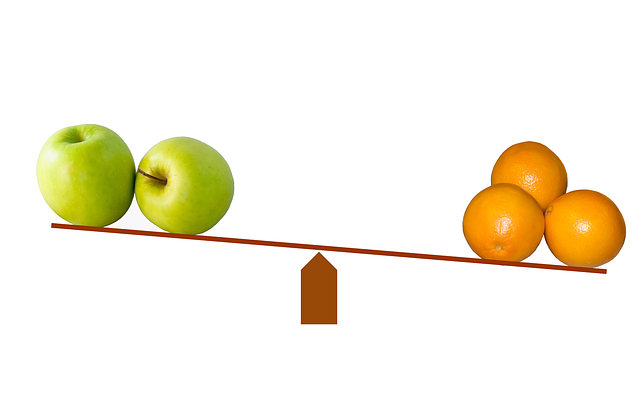This text compares Purchase Order (PO) financing and invoice factoring, two alternative funding methods for businesses.
PO financing offers flexible terms, controls sales negotiations, and advances a percentage of future revenue from POs, providing short-term funding without tying up accounts receivable long-term. It's ideal for companies with complex deals or lengthy payment cycles.
Invoice factoring, on the other hand, provides immediate funding (often within 24 hours) by selling existing invoices to a third party at a discount. It offers quick cash flow but lacks PO financing's flexibility and usually involves higher fees. Factoring is suitable for businesses needing fast access to funds from consistent revenue streams.
The decision between them depends on a company's cash flow needs, financial health, payment terms, growth plans, and risk tolerance.
Navigating the cash flow challenges of growing a business can be daunting. Two popular funding options often discussed are Purchase Order (PO) financing and Invoice Factoring – each with unique benefits and drawbacks. This article delves into these strategies, exploring how PO financing works, the process and advantages of invoice factoring, and dissecting key differences, costs, and scenarios where one might be preferable over the other. By the end, businesses will be equipped to make an informed choice between PO financing or invoice factoring to fuel their growth.
- Understanding Purchase Order (PO) Financing: How It Works and Benefits
- Exploring Invoice Factoring: Definition, Process, and Advantages
- Key Differences Between PO Financing and Invoice Factoring
- Comparing Costs and Fees: PO Financing vs. Invoice Factoring
- Scenarios Where PO Financing or Invoice Factoring is Preferable
- Choosing the Right Option: PO Financing vs. Invoice Factoring for Your Business
Understanding Purchase Order (PO) Financing: How It Works and Benefits

Purchase Order (PO) financing is a funding method that provides businesses with working capital by allowing them to sell their accounts receivable at a discount. It works by securing a PO from a buyer, who agrees to pay for goods or services at a later date. The financier then advances a percentage of the PO value to the seller, essentially providing upfront cash flow. This method is beneficial for businesses looking for short-term funding to cover immediate expenses or capital requirements without tying up their accounts receivable long-term.
PO financing offers several advantages over invoice factoring. It maintains control over the sales process and allows businesses to negotiate terms with buyers directly. Additionally, PO financing typically involves lower fees and interest rates compared to factoring, as it carries less risk for the financier since the payment is guaranteed by a third party (the buyer). This makes it an attractive option for companies seeking flexible funding solutions while preserving their financial independence.
Exploring Invoice Factoring: Definition, Process, and Advantages

Invoice factoring is a financial solution that offers businesses an efficient way to manage their cash flow and secure immediate funding for outstanding invoices. In this arrangement, a company sells its accounts receivable (invoices) to a third-party factor, who then collects the payments directly from the customers. This process provides businesses with quick access to capital, typically within 24 hours of selling the invoices. The factor charges a fee, which is usually a percentage of the total invoice amount, and this service can be particularly beneficial for small businesses or those with uneven cash flow patterns.
The process involves several steps: the business identifies its eligible invoices, submits them to the factor, receives funding, and the factor takes over the collection process. This method offers several advantages, including improved cash flow, reduced administrative burden of collections, and potential discounts on future purchase orders as factors often offer competitive rates. Unlike PO financing, which focuses on providing funds against a specific purchase order, invoice factoring can be applied to a pool of invoices, offering more flexibility for businesses with diverse customer bases.
Key Differences Between PO Financing and Invoice Factoring

When deciding between purchase order (PO) financing and invoice factoring, understanding the key differences is crucial. PO financing involves funding provided to a business based on its outstanding POs from customers, allowing companies to purchase inventory and fulfill orders before receiving payment from the end buyer. This method offers flexible terms, improves cash flow, and can enhance supplier relationships since the financier bears part of the risk.
On the other hand, invoice factoring involves selling invoices (or accounts receivable) to a third-party factor for immediate funding. Unlike PO financing, which focuses on pre-sales and inventory acquisition, factoring provides quick access to cash based on the value of pending invoices. While this can be advantageous for businesses with slow-paying customers or unpredictable cash flow, it typically involves higher fees and may not offer the same level of flexibility as PO financing in terms of term length and relationship management. Comparing PO financing vs invoice factoring, businesses must weigh these differences to choose the option best aligned with their financial needs and strategic goals.
Comparing Costs and Fees: PO Financing vs. Invoice Factoring

When considering PO financing or invoice factoring, a crucial aspect to evaluate is the cost structure. Both methods come with distinct fee arrangements that can significantly impact cash flow management for businesses. PO financing typically involves securing a loan based on future sales represented by purchase orders. Lenders charge interest rates and fees, which can vary depending on factors like creditworthiness and the industry. While this approach offers access to immediate funds, businesses must ultimately repay the loan with interest, potentially increasing overall expenses.
On the other hand, invoice factoring provides a different cost dynamic. Factoring companies purchase accounts receivable at a discount, taking over the task of collecting invoices from customers. Instead of interest, businesses pay a factor fee based on the value of the invoices and the terms agreed upon. This method can be more flexible in terms of fees, as they are often percentage-based and may not require long-term repayment. However, the upfront discount on receivables means businesses receive less immediate funding compared to PO financing. Comparing PO financing and factoring, business owners should scrutinize these cost differences to make an informed decision tailored to their cash flow needs.
Scenarios Where PO Financing or Invoice Factoring is Preferable

When deciding between purchase order (PO) financing and invoice factoring, understanding when each method is most beneficial can help businesses make informed choices.
PO financing is often preferable for companies dealing with long sales cycles, complex deals involving multiple POs, or projects requiring significant upfront investment in inventory or materials. It allows businesses to secure funding against future revenue from these orders, providing working capital without requiring immediate payment of invoices. Conversely, invoice factoring is more suited to firms seeking quick cash flow, particularly those with consistent, recurring revenue streams and shorter collection cycles. Factoring converts outstanding invoices into immediate funds, improving cash flow but doesn’t offer the same level of flexibility as PO financing in managing long-term financial obligations. Comparing these two methods requires evaluating a company’s specific needs, payment terms with clients, and desired cash flow management strategies.
Choosing the Right Option: PO Financing vs. Invoice Factoring for Your Business

When it comes to funding your business’s growth, especially when dealing with large purchases or slow-paying clients, understanding the nuances between PO financing and invoice factoring is crucial. Both options offer unique benefits tailored to different business needs. Purchase order (PO) financing is a great fit for companies seeking to secure funds before the buyer makes payment on an existing purchase order. It’s ideal if your business relies heavily on POs from customers and you’re looking for more flexible terms to manage cash flow.
On the other hand, invoice factoring provides a quick injection of capital by selling your outstanding invoices to a third-party factor at a discount. This method is advantageous when you need rapid access to funds, typically for day-to-day operations or unexpected expenses. Invoice factoring can be a game-changer for businesses dealing with lengthy payment terms from clients, as it offers immediate cash flow rather than waiting for the invoice due date. Comparing these two methods, PO financing tends to be more suitable for strategic growth plans, while factoring is often a tactical move to manage immediate financial needs.






